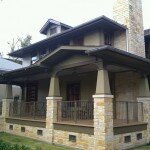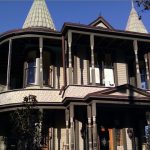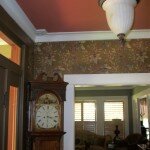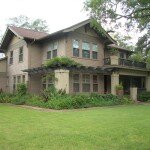Historic Homes
High velocity preserves the existing architecture in historical homes.
No matter when your home was built or what the physical configurations are, you can install a high velocity system from Unico for high performance heating and cooling comfort.
Crafted to weave through and around existing construction, this flexibility makes it the perfect solution for retrofit applications. In fact, you will find there’s little or no remodeling required for installation: high velocity systems fits where conventional systems can’t.
The flexible small-ducts can be routed through existing cavities in the ceilings, walls, and floors. The modular air handlers and coils can be easily installed into ceilings, crawlspaces, and closets.
Lower humidity is another great benefit for historical homes, to remove more moisture from the older building materials.
A high velocity system from AirMart of Texas is a great way to preserve your home for years to come, which is why it has been featured on This Old House.
AirMart of Texas is a certified contractor for Unico Systems, which has a Partnership with the National Trust for Historic Preservation.
Do you have a historical home that you need to cool down, but aren’t sure where to start?
If you are confused about your air conditioning choices for your historical home, and how they relate to your budget, Airmart of Texas can help.
There are three types of air conditioning systems available to historical homes: Window Units, Conventional A/C systems, and High Velocity (or small duct) A/C systems.
Read on to learn the pros and cons for these air conditioning choices so you can determine which one is best for your particular home and budget.
1) Window Units
Since most historical homes were not designed with central air conditioning in mind, window units are very common. They are the most inexpensive choice among the three air conditioning types, and very easy to install.
Unfortunately, while they are easy to install, they are also easy to remove. This causes safety issues, allowing robbers the opportunity to remove the unit. It even gives them something to step on to enter into the window.
While the unit can be a great temporary solution, for long term use it is problematic. A few of the problems include:
Lack of Humidity removal
Extremely Noisy
Uneven room temperatures
Lack of good filtration
If you want a clean, mold-free, quiet, comfortable, hypo-allergenic home, we recommend looking into the next two options.
2) Conventional Air Conditioning
As the name suggests, conventional air conditioning is the most common type of air conditioning used in a home, and the type of system most contractors and architects are familiar with.
Conventional air conditioning provides better filtration, humidity removal, noise reduction and safety than window units. It also begins to give you thermostat options, which provide tighter control on the temperature.
While the cost of the initial system is "average" out of the three options, the large ductwork that comes with conventional systems can be very costly for multiple reasons:
Covering the ductwork requires additional design and construction that must be factored into the total cost.
Cost of storage space. The few small closets built inside a historical home is usually lost when conventional a/c is added.
This type of system also typically removes the majority of attic space allowed for storage and build-outs.
Another huge problem historical homes encounter with conventional air conditioning is reduction in historical value and architectural integrity. Additions such as fur-downs are non-aesthetically pleasing, and the large grills can affect the overall historical look.
Uneven temperature is another problem caused by conventional air conditioning. Hot and cold spots are frequent.
3) High Velocity
High velocity air conditioning, also called small duct air conditioning, is the perfect combination of form and function for a historical homes.
Functionally, high velocity a/c systems provide:
The best possible humidity removal
The best comfort level
The best possible filtration to control mold and allergies
Even temperature control with the latest thermostats
Super-efficient and carbon monoxide free gas heating, which can be adapted into the system (future article on this subject coming soon)
In beauty and form, high velocity systems are unmatched, for multiple reasons:
The small duct work takes up less space, freeing up your closets and attic space again. The total installation takes up only 1/3 of the total attic space, on average.
The system can be installed with little to no remodeling
Designer grills and many outlet choices to add to the beauty of your home
High velocity systems are a premium product, and come with a premium cost, sometimes- 20-50% more than conventional air-conditioning. In our next series, we will be discussing solutions to help with the cost of a high velocity a/c system.
Preserve the architectural integrity and historical value of your home by installing a high velocity system.
Having your system installed by Airmart of Texas means you will be taken care of by experienced professionals with a total of 40 years’ experience in high velocity air-conditioning.











